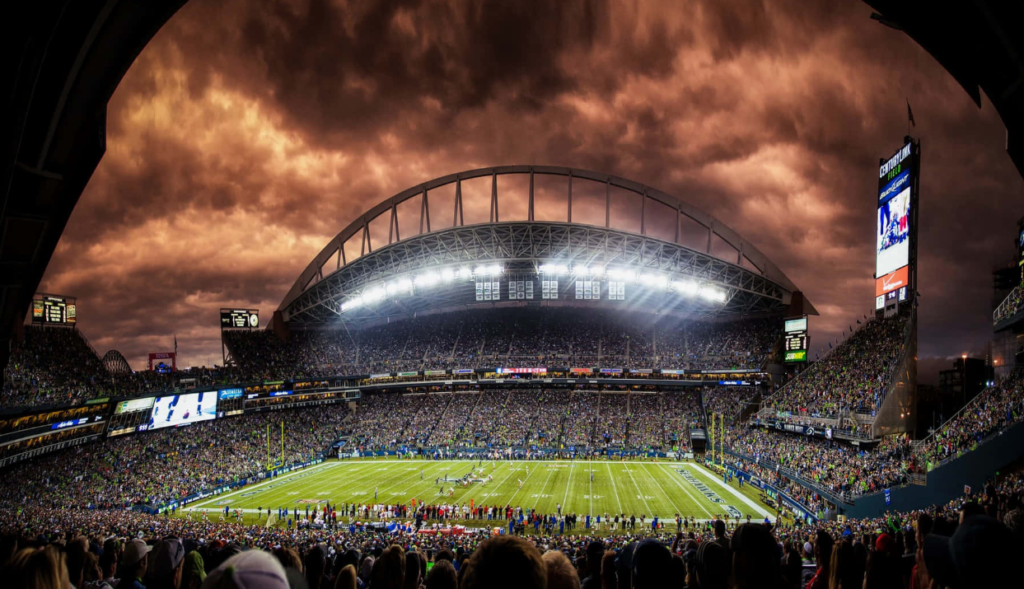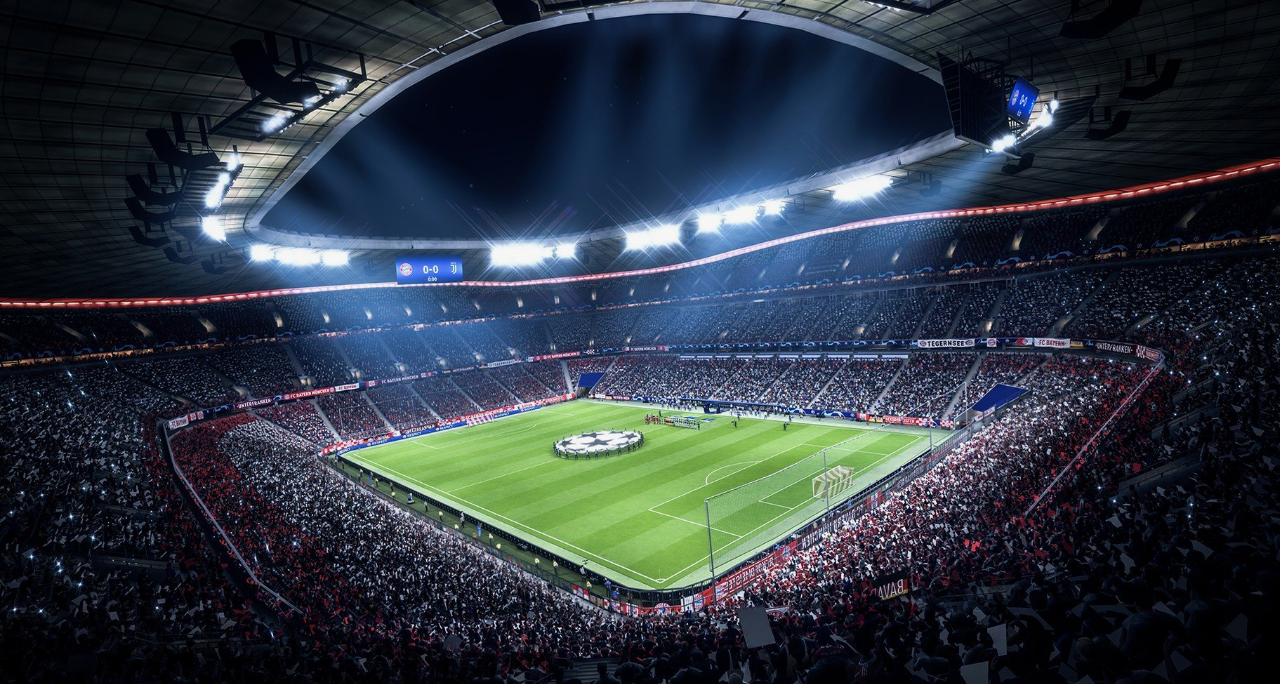A FIFA soccer field measures 100-110 meters in length and 64-75 meters in width. The field is rectangular, with standardized dimensions for official matches. Soccer, also known as football in many countries, is the most popular sport globally, with FIFA being the governing body. Understanding the dimensions of a soccer field is essential for players, coaches, and fans alike. The field provides the stage for exhilarating matches and showcases players’ skills and strategies.
Each part of the field has its significance, from the penalty area to the center circle. Knowing the dimensions helps players navigate the field effectively, making precise passes, shots, and tackles. Let’s delve deeper into the importance and impact of FIFA soccer field dimensions in the world of football.
FIFA Soccer Field Dimensions

Standard Field Dimensions
Length of The Field- FIFA Soccer Field Dimensions
The length of a standard FIFA soccer field is 100 to 110 meters.
Width of The Field- FIFA Soccer Field Dimensions
The width of the field ranges from 64 to 75 meters.
Goal Area and Penalty Area
The goal area and penalty area on a FIFA soccer field are crucial zones where key plays occur. The goal area is the box surrounding the goal, while the penalty area is a larger box where fouls lead to penalty kicks.
Soccer is a popular sport played around the world, and every professional match is played on a field that adheres to specific dimensions. The governing body of soccer, FIFA, has outlined the standard dimensions for soccer fields. The goal area and penalty area are two crucial areas of a soccer field that have their unique dimensions.
Dimensions of The Goal Area
The goal area, also known as the six-yard box, is a rectangular area surrounding the goalpost. The goal area extends six yards from the goal line into the field and is 20 yards wide. This area is marked by lines that extend from the goal line to the edge of the penalty area. The goal area is where the goalkeeper has special privileges, including the ability to handle the ball with their hands. It is also where the ball is placed for a goal kick. Knowing the dimensions of the goal area is essential for players and referees alike, as it helps ensure fair play and adherence to the rules of the game.
Dimensions of The Penalty Area
The penalty area, also known as the 18-yard box, is a larger rectangular area that surrounds the goal area. The penalty area extends 18 yards into the field from the goal line and is 44 yards wide. This area is marked by lines that extend from the goal line to the edge of the field. The penalty area is where fouls committed by the defending team result in a penalty kick for the attacking team. The goalkeeper also has special privileges in this area, similar to those in the goal area. Understanding the dimensions of the penalty area is crucial for players, coaches, and referees, as it helps ensure fair play and adherence to the rules of the game. FIFA has outlined the standard dimensions for soccer fields, including the goal area and penalty area. Players and referees need to have a clear understanding of these dimensions to ensure fair play and adherence to the rules of the game. For more information on FIFA soccer field dimensions, you can refer to the FIFA soccer field dimensions PDF or find the FIFA soccer field dimensions in meters online.
Corner Arc and Center Circle
FIFA Soccer Field Dimensions: Corner Arc and Center Circle
In soccer, the corner arc and center circle play crucial roles in the game. Understanding the measurements of the corner arc and the size of the center circle is essential for players, coaches, and referees. Let’s delve into the specifics of these key elements on the soccer field.

Measurement of Corner Arc
The corner arc is a vital component of the soccer field, providing a designated area for corner kicks. According to FIFA regulations, the corner arc must have a radius of precisely 1 yard (1 meter). This measurement ensures consistency across all soccer fields, allowing players to execute corner kicks with precision.
Size of The Center Circle
The center circle serves as the focal point of the soccer field, influencing the dynamics of play from the kickoff and throughout the game. FIFA mandates that the center circle must have a diameter of 10 yards (9.15 meters). This sizable area provides ample space for the initial kickoff and sets the stage for strategic positioning and ball movement during the match.
Goal Size and Net
FIFA soccer field dimensions in meters and FIFA soccer field dimensions in feet dictate the size of the goal and the net used during matches. Understanding the regulations around the goal size and net specifications is crucial for both players and referees.
Regulated Goal Size
In FIFA-sanctioned matches, the goal size must adhere to specific dimensions. The width of the goal should measure 7.32 meters or 24 feet, while the height should be 2.44 meters or 8 feet. These standardized measurements ensure consistency across different games and competitions.
Requirements For Goal Nets
- Goal nets must be securely attached to the goalposts and crossbar.
- The net should be made of a durable material that can withstand the impact of powerful shots.
- The mesh size of the net should be appropriate to prevent the ball from passing through while allowing clear visibility.
- Goal nets are typically white to contrast with the ball and the field.
Difference In Field Dimensions
When it comes to soccer, the dimensions of the field play a crucial role in the game. The size of the field can vary depending on the level of play, and it’s important to understand the differences in field dimensions to fully appreciate the game.
Variations In Field Sizes For Different Levels Of Play
Soccer field size in feet can differ significantly between various levels of play. For professional matches, FIFA regulations dictate a field size of 100-110 meters in length and 64-75 meters in width. On the other hand, for amateur and youth games, the field size may vary, often ranging from 90-120 meters in length and 45-90 meters in width. These variations ensure that the field dimensions are suitable for the age and skill level of the players, providing an optimal playing environment.
Comparison of Fifa Field Dimensions With Other Organizations
When comparing FIFA’s 11-a-side football pitch size in meters with other organizations such as UEFA or local football associations, there may be slight differences in the field dimensions. While FIFA provides standard guidelines, other organizations may have specific regulations for field sizes, often influenced by regional preferences and traditions. Despite these differences, the fundamental principles of the game remain consistent, with the field dimensions tailored to accommodate the style and level of play.

Impact of Field Dimensions on Gameplay
The dimensions of a FIFA soccer field significantly influence the gameplay, affecting the speed, strategy, and overall dynamics of the game. With larger fields, players have more space to maneuver and build up play, while smaller dimensions lead to a faster-paced, tightly contested game with less room for error.
These variations in field dimensions create diverse playing experiences for teams and players.
Impact of Field Dimensions on Gameplay The dimensions of a FIFA soccer field have a significant impact on the overall gameplay. The size of the field affects the strategies and tactics employed by teams, as well as the positioning of players. Understanding the influence of field dimensions on gameplay is crucial for both players and coaches. ### Effect on Strategy and Tactics The dimensions of the field directly influence the strategy and tactics utilized during a soccer match. A larger field allows for more open play and encourages teams to spread out, utilizing width and creating space for passing and movement. Conversely, a smaller field often leads to a more congested style of play, with an emphasis on quick, short passes and tight defensive formations. This variation in field size dictates the approach teams take to control possession, create scoring opportunities, and defend against the opposition. ### Influence on Player Positioning The dimensions of the field also play a pivotal role in determining player positioning. 11 A side football pitch size in meters typically requires players to cover more ground and utilize the full length and width of the field. This can result in different player positioning compared to high school soccer field dimensions, where the smaller playing area demands more compact and organized defensive and offensive structures. The positioning of players is crucial to maintaining balance and control across the field, and the dimensions directly impact the spatial relationships between teammates and opponents. Understanding the impact of field dimensions on gameplay is fundamental for players and coaches.
Conclusion
Understanding the dimensions of a FIFA soccer field is crucial for players, coaches, and fans. It impacts the game’s strategy, flow, and overall experience. By grasping the dimensions and regulations, one can appreciate the sport even more. Whether you’re a player or a spectator, the field’s dimensions play a vital role in the beautiful game.

